Goosemaster
Well-known member
This is my 1957 sweet 16 BrowningThis is my boy little Johnny Jones flushing a bird.
This is my 1957 sweet 16 BrowningThis is my boy little Johnny Jones flushing a bird.
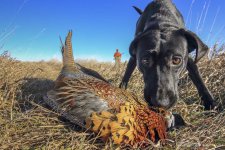

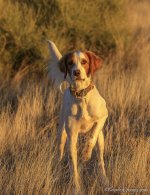
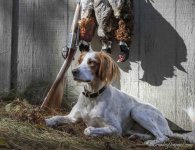
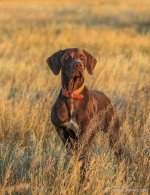
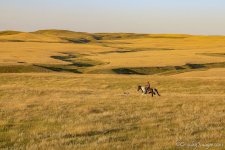

Yes and "catch light" in the dogs eyes is also important!Lower than the dog is usually a good policy, and sometimes you can't get low enough!
View attachment 8998
But every once in a while, high above the dog is the best choice.
View attachment 8999
Usually eye contact makes a photo better, too.
View attachment 9000
But not always.
View attachment 9002
Shooting during the "Golden Hours" usually give the best results.
View attachment 9003
Include the environment, too.
View attachment 9005
The one tip I'd give other than those already mentioned in the thread is; a dog with it's ears perked invariably makes the photo better than a dog with it's ears back. Some dogs just hate being photographed, but if you rattle a box of treats or use a squeaker to get their attention, the results are almost always better.
View attachment 9006
A photo to discard.
Got the landscape with this photo, but should have waited longer to capture the "catch light" in the dog's eye
and hope for a shot where no grass blade blocking the dog's face.
From yesterday's hun hunt in Montana.

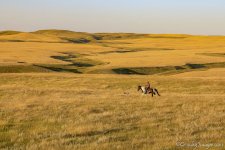
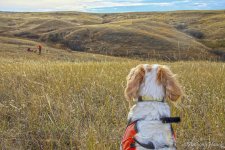
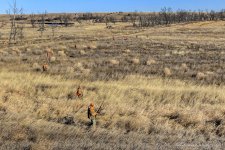
My favorite hunting landscapes always have something that draws the eye into the photo. This photo isn't mine but I included it in my last book because it's so good at drawing the viewer right into the scene. Anthony Hauck is the photographer and his dog Sprig is showing us all where to look:
View attachment 9026
Interesting take. I can only say that's a minority opinion.This is a photo with potential but it easily could have been so much better. Look at that big country, but I feel squeezed in just looking at it. Why? That beautiful sky, the thing everyone loves about the west, is clipped terribly. What other interesting clouds and shades of blue were up there? We'll never know. I found it claustrophobic, like the ceiling was an inch above my head.
It is a nice photo with the landscape, the beautiful dog's gaze leading the viewer into the picture, and the other hunters and dogs in the distance. I just think if the camera would have been tilted up slightly you'd get more sky in the image, the dogs head would be closer to the lower third grid lines on the right side. I'm guessing a majority of people would say it's a good image. I'm also guessing a majority of landscape photographers would say it's an image that could easily be improved upon. Just my amateur take. Thanks for sharing your images and tips, they are good ones.Interesting take. I can only say that's a minority opinion.
That dog really finds a lot of partridge!
